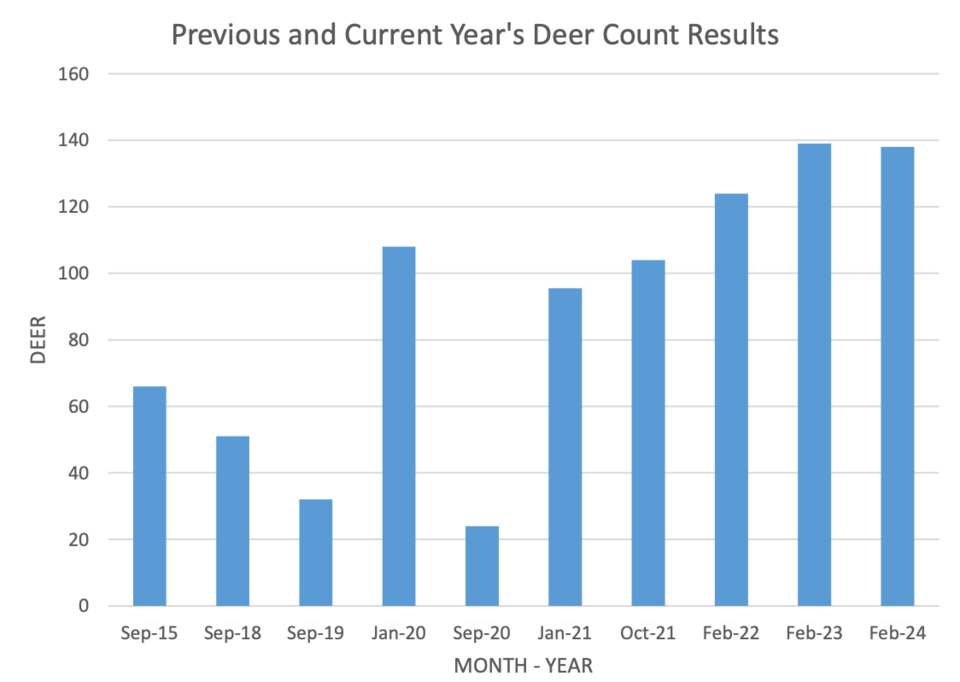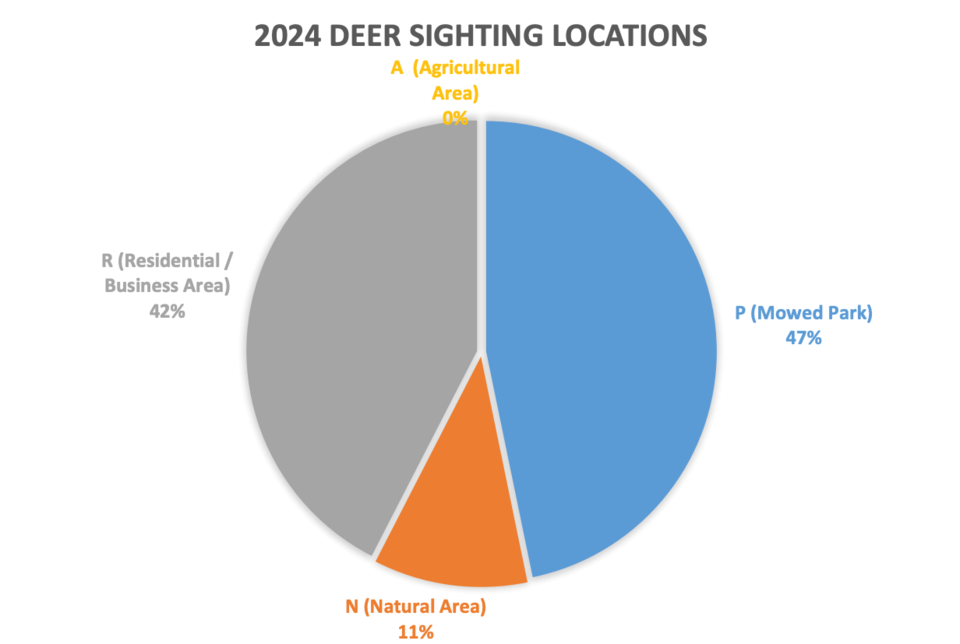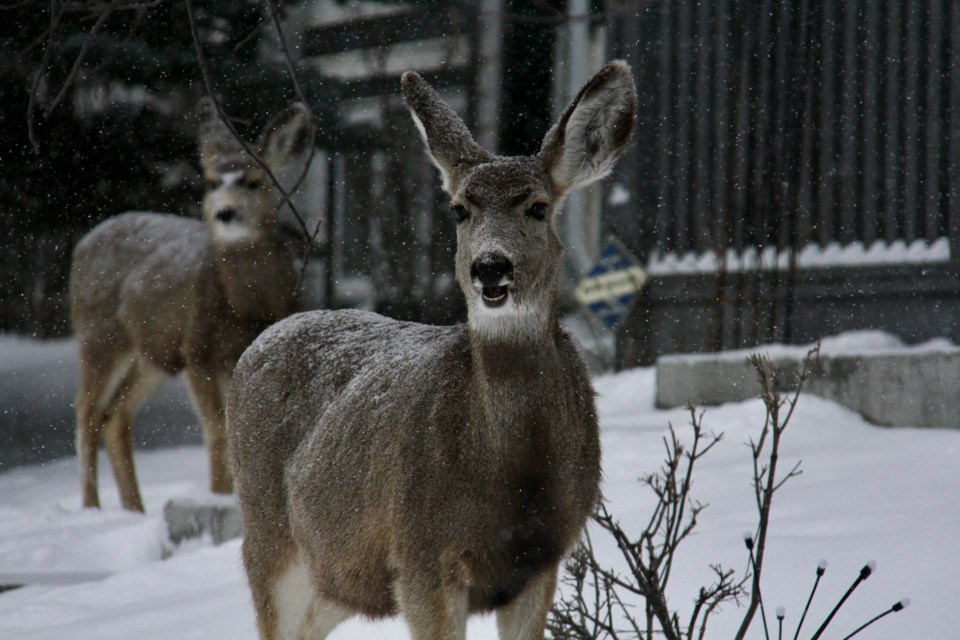An annual population survey of Okotoks' resident deer has provided some insight into the animals that call the town home.
The 2024 deer count was conducted by the Town of Okotoks on Feb. 28, and a finalized report of the count's findings was shared with the Western Wheel on Jan. 29 the following year.
According to the report, 138 mule deer were counted in 2024, which compared to the 139 counted the year before reflects a relatively stable population.
The report indicates that while overall numbers in deer appear to be stable, significant fluctuations were observed in bucks and fawns. Thirty-nine fawns were counted, a significant increase from 23 the previous year, and only three bucks, a dramatic decrease from the 19 counted the year before.

As with previous deer counts, the 2024 population survey entailed volunteers driving around Okotoks on designated routes and counting deer for one hour. While far from scientific, data collected over the years has contributed to the Town's ongoing development of deer management plans.
According to the report, 17 duplicate sightings in this 2024 count were accounted for in the final numbers.
"Therefore, according to our methods, deer numbers appear to be reasonably stable and not showing a significant increase or decrease," reads the report.
Mule deer were the only species counted, as other species such as white-tailed deer do not typically frequent Okotoks due to differing habitat preferences.
The count focused on areas within the urban limits of Okotoks, but deer were also counted on the edge of the town in adjacent agricultural areas.
According to the report, residential areas and manicured parks were the major areas deer were located in the 2024 count, while natural areas were third.
"More deer in residential areas and parks during dawn may suggest these areas are a good food source as this is when deer tend to feed more actively," reads the report.

The count is conducted early in the morning during February since deer are more active at dawn and sighting them is easier with less foliage on trees and shrubs.
The Okotoks deer count was first conducted in 2015 and became an annual count in 2018.
The first count in 2015 tallied 66 deer in Okotoks, a number which had increased to 108 by the 2020 count.
The 2025 Okotoks deer count will be conducted on Feb. 11 with the same methodology.
The goal of the annual deer count is to monitor the populations and demographics of deer, with that data then assisting the Town in the development of an urban deer action plan.
The 2022-2025 Okotoks Urban Deer Management Strategy & Action Plan, released in August 2022, outlines potential solutions to concerns around the Okotoks deer population. According to the plan, ongoing short-term strategies include encouraging the planting of deer-resistant flora alongside other deer aversion techniques such motion-sensing sprinklers and chemical deterrents, while long-term strategies include investigations like the annual deer count and meetings with the Province and other stakeholders.
While the Town has indicated that a deer cull is not planned, the Strategy & Action Plan will revisit the idea of sterilization through immunocontraceptive injections "after 2026."





